Visiting Lisbon is one the top of many Portugal bucket list. If you’re planning your first visit here, this guide covers all thing to known to plan the perfect trip!
I’ve curated all the inspiration, ideas, and personal recommendations you need to create an unforgettable experience in the capital of Portugal in my guide, 11 amazing things to do in Lisbon.
In this post however, I wanted to share useful advice on the practical side of preparing for your time in Lisbon. Whether visiting for a couple days or a week, these personal tips on where to stay, tickets, transport, and avoiding the worst of the queues, will help you get ready, save time, and ensure a travel better experience.
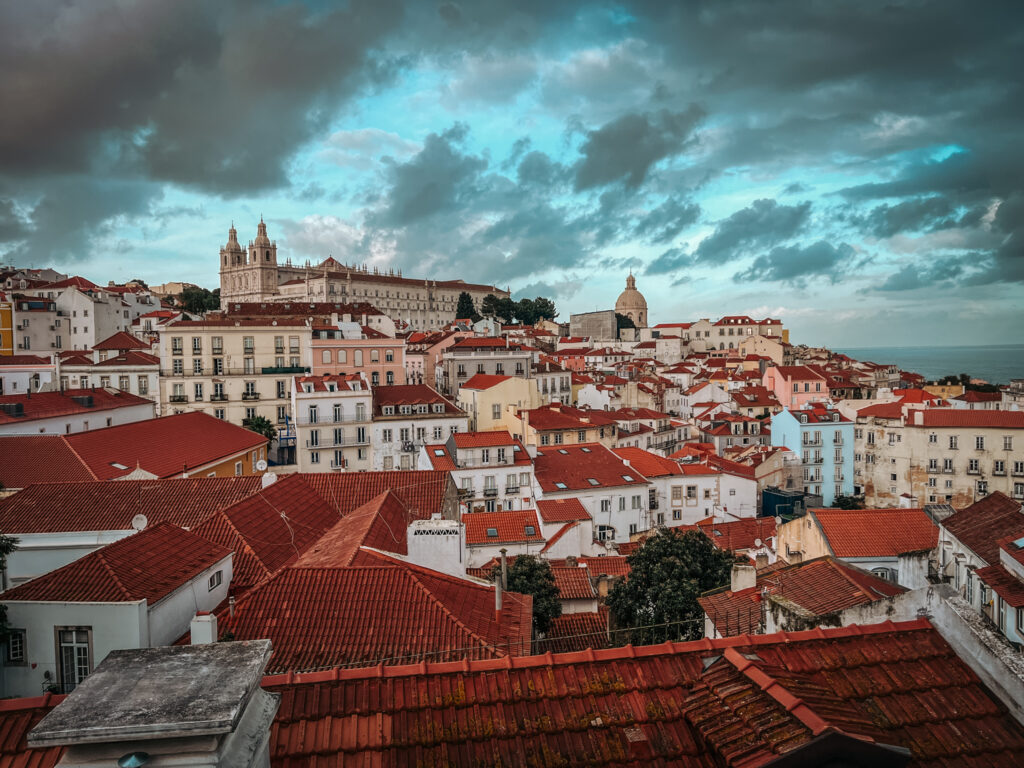
HERE ARE 14 THINGS TO KNOW BEFORE VISITING LISBON
IT’S NOT LISBON IN PORTUGUESE
Ok, easy one to start with.
In Portugal, the city of Lisbon is called ‘Lisboa’.
If you’re booking trains or looking for accommodation or airports, it’s usually going to refer to ‘Lisboa’ rather than English exonym of Lisbon!
Quick note on pronunciation too – it’s “Luhz·bow·uh” and not Liz·Boa!
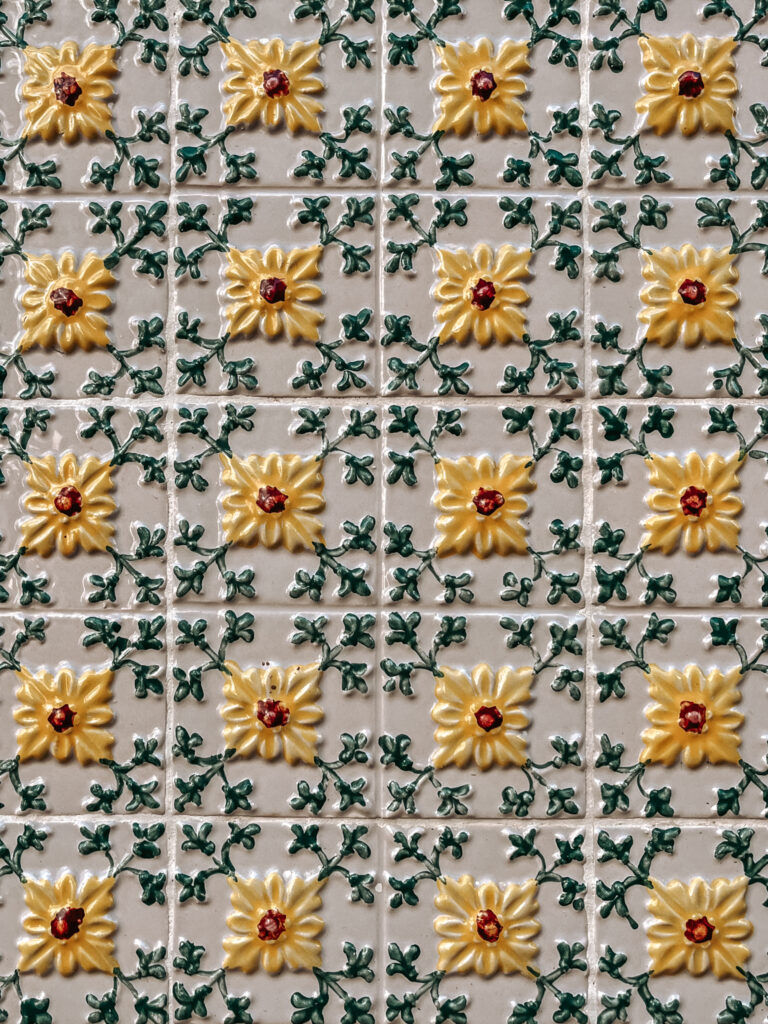
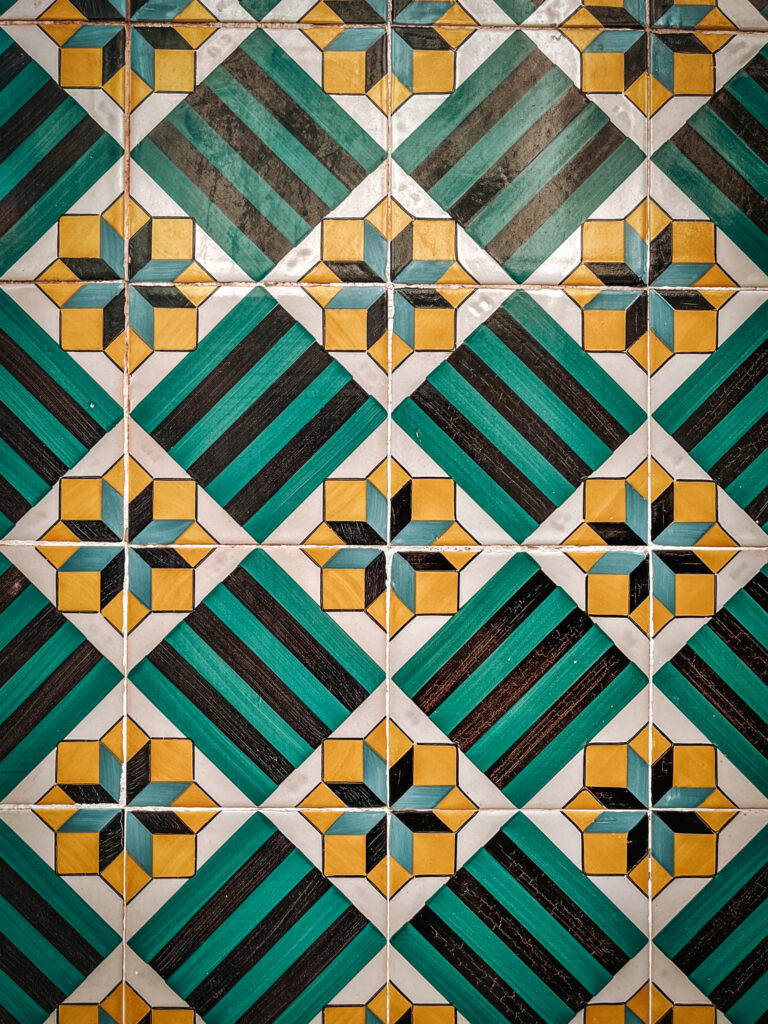
HOW TO GET TO LISBON?
BY PLANE
Lisbon’s airport – also known as Humberto Delgado Airport (LIS) – is the major aviation hub of Portugal. This international airport welcomes flights from all over the world. From Canada, there are direct flights to Lisbon from Toronto and Montreal depending on the time of year: Air Canada, TAP Air Portugal and Lufthansa all have direct flights from Canada.
If you do fly into Lisbon airport, then you have two options to reach the city centre:
1. The metro service (find a metro map here) is the cheapest and most convenient. Departure are around every six minutes, tickets cost €1.50, and it takes 20 minutes to arrive downtown. Buy tickets from the machines before you board.
2. You can also find a taxi, normally queueing outside the departures and arrivals terminals. Depending on traffic, the journey to the city centre is quick, costing between 10 and 15 euros, including luggage fees. If you choose this mean of transportation, make sure the meter is turned on at the beginning of the journey and always ask for a receipt/invoice.
BY TRAIN
If you’re already in Portugal, then taking the train is the most convenient. It’s important to note that there are two main train stations in Lisbon :
- The first one is Rossio Train station, in the center of Lisbon;
- The second is Estação do Oriente, the train station nearest to the airport.
Typical train times / costs from the following popular destinations are:
- Sintra/ 1 hour / €5
- Coimbra / 1.5 – 2 hours / €13 – 26
- Porto/ 3 hours / €35
- Faro / 3 – 3.5 hours / €25
From Rossio station, you’re a short walk from the the main attractions in the center of Lisbon. The Oriente Station is a bit farther out : it takes around 25 minutes by taxi or by metro to get to the city center.
To book train tickets in advance, check out Omio.
BY BUS
Depending on where you are in Portugal, traveling by train directly from Lisbon might not be possible as some smaller cities are only covered by local trains. In these instances, the bus is a great option. It is also the cheapest way to travel in Portugal if you are on a budget and often doesn’t take much longer than the train.
I found that FlixBus offered a wide variety of routes to and from Lisbon at a very good price. The buses are clean and comfortable.
In Lisbon, the bus station is located at the Oriente Train Station.
Typical train times / costs from the following popular destinations are:
- Porto/ 3 hours / €12
- Lagos / 4 hours / €10 – 20
- Faro/ 3.5 hours / €10 – 15
- Coimbra / 2.25 hours / €10
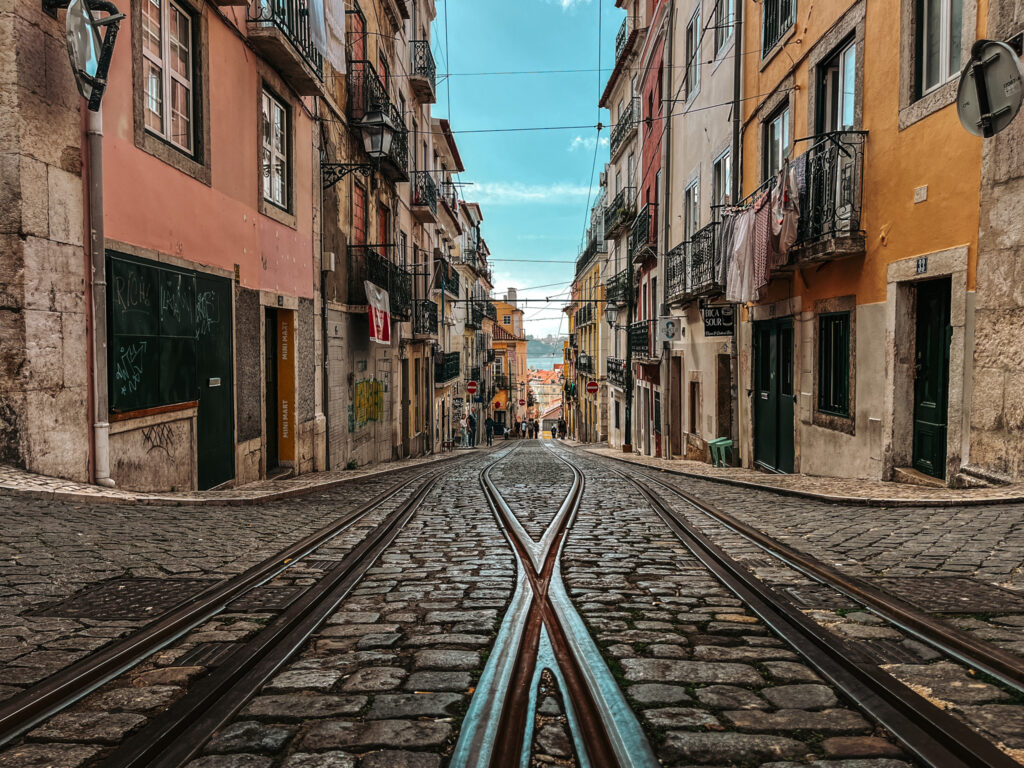
WHAT IS THE BEST TIME TO VISIT LISBON?
I have visited Lisbon at many different moments of the year and always found it enjoyable. My favorite periods however are in October and in April : the crowds and the high temperatures are gone, but the weather was still nice enough to go around with a light jacket. The only compromise you have is to deal with the unpredictable weather : I experienced some short showers in late October – early November.
If you’re in the planning phase right now and have flexibility, I’d recommend early spring (April – May) or late summer /early autumn(September – October) as the best time to visit Lisbon This city will always have a certain level of tourism, but those months will see it at its most pleasant.
In late June, July, and August – the peak months of school holidays and tourism in Europe – expect high numbers of tourists, longer waiting times, and higher prices on accommodation. This shouldn’t put you off visiting Lisbon in summer, but it’s good to know in advance.


HOW LONG SHOULD I STAY IN LISBON?
The question you are probably asking yourself is : how many days should I spend in Lisbon? Is 3 days enough? What if I only have a weekend? Don’t worry, I’ve got you covered!
Is three days in Lisbon too much? No, 3 days is actually perfect to explore Lisbon. However, be prepared for the crowds – Lisbon has become quite the hotspot for tourists, and navigating through them might wear on your nerves. Here is how I would do it:
Day 1: Explore the neighborhoods of Alfama, Baxia and Bairro Alto, end the day by seeing a Fado performance.
Day 2: Head to Belém for the first half of the day, stop at LX Factory on the way back and see a sunset from one of the Miradouros.
Day 3: Do a Day trip to Sintra to see the palaces
Keep Reading // 11 Amazing Things to do in Lisbon
And what about squeezing it all into two days? It’s a whirlwind, but it can be done! You’ll have to be strategic with your itinerary, hitting the highlights like Belém and Sintra in a sprint. Just remember to catch a Fado performance in Alfama for a taste of traditional Portuguese culture. Here’s what I suggest:
Day 1 : Head to Belém in the morning and explore Aflama and Baxia in the afternoon. See a sunset from one of the Miradouros.
Day 2: If you really want to see Sintra be strategic and pick only one castle or two and the day by going to a Fado restaurant.
No matter how many days you spend in Lisbon, and despite the throngs of tourists, there’s something undeniably captivating about this city. Whether you’re strolling through the upscale districts or getting lost in the historic quarters, Lisbon has a way of charming its visitors. Plus, it serves as an excellent base for day trips – Sintra, anyone?
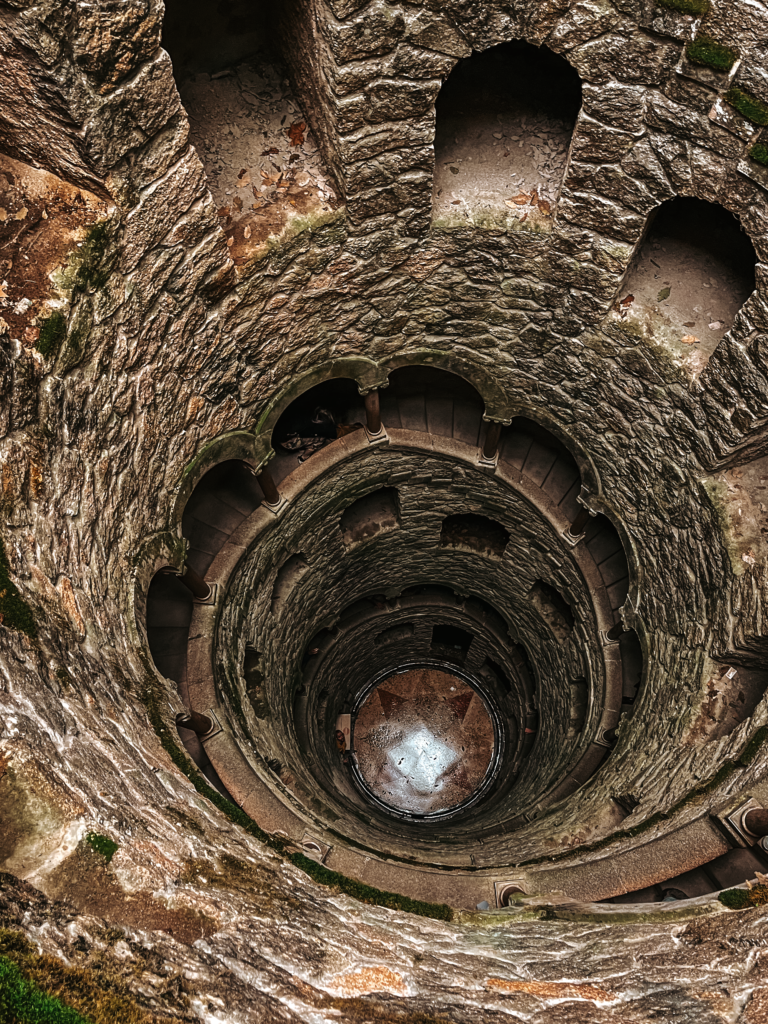

IT’S CALLED THE “CITY OF SEVEN HILLS” FOR A REASON
Legend has it that once upon a time, in the land of Portugal, there was a Queen who was part woman, part serpent. When the famed Greek hero Odysseus (or Ulysses, if you prefer the Roman version) graced her shores, she fell deeply in love with him. Despite her efforts to keep him close, Odysseus’s heart belonged to his wife, Penelope, waiting faithfully in Greece.
When he departed, the Queen’s fury knew no bounds – it’s said that her rage transformed her arms into serpents, shaping the seven hills of Lisbon, earning it the nickname”City of the Seven Hills.”
However, a more grounded explanation traces back to a 17th-century book called ‘Livro Das Grandezas De Lisboa’, describing a city perched atop seven hills.
Whether you’re drawn to the romantic tale or prefer the historical account, one thing’s for certain: Lisbon’s hills are no joke! Your feet are in for a workout! Forget about those fancy heels or shiny boots; comfy shoes are your best friend here. Sure, Lisbon’s got those jaw-dropping views, but you gotta work for ’em, navigating those hilly streets and endless stairs.
Trust me, though, it’s all part of the charm!

IT SURVIVED AN EARTHQUAKE
If you have to know one piece of history before visiting Lisbon, it’s this one: Lisbon survived an earthquake in 1755 and the impact of this tragedy have shaped the Lisbon you see today.
So what happened exactly?
The 1755 Lisbon earthquake, also known as the Great Lisbon earthquake, struck with terrifying force on the morning of Saturday, 1 November, coinciding with the Feast of All Saints, at around 9:40am local time. The quake, followed by fires and a catastrophic tsunami, causede widespread devastation across Lisbon and the surrounding area.
The toll was staggering, with an estimated 12,000 lives lost in Lisbon alone, rendering it one of history’s most catastrophic earthquakes. Beyond the immediate devastation, the quake sparked political turmoil within Portugal and dealt a severe blow to the Portuguese Empire, its repercussions reverberating far and wide.
The remarkable reconstruction of Lisbon following the devastating 1755 earthquake is credited to the Marquis of Pombal, hailed as the “savior of Lisbon” for his efforts.
Beyond organizing relief efforts and overseeing burials for the deceased, the Marquis spearheaded the city’s reconstruction. In less than a year, the much of the city had emerged from the rubble.
Keep this in mind as you walk around the city. Some neighborhoods, like Alfama and Belém survived the earthquake and look similar to what they would have been before 1755. Others, like the Baxia neighborhood has been completely reconstructed in the Neoclassical architecture favoured by the Marquis of Pombal.
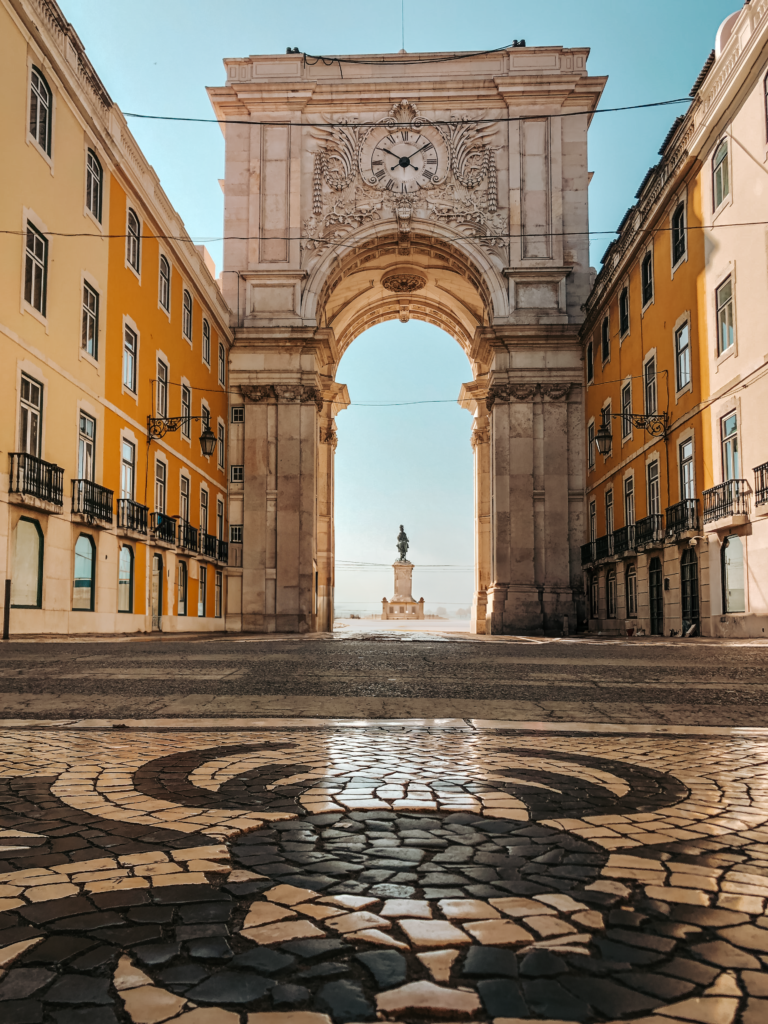
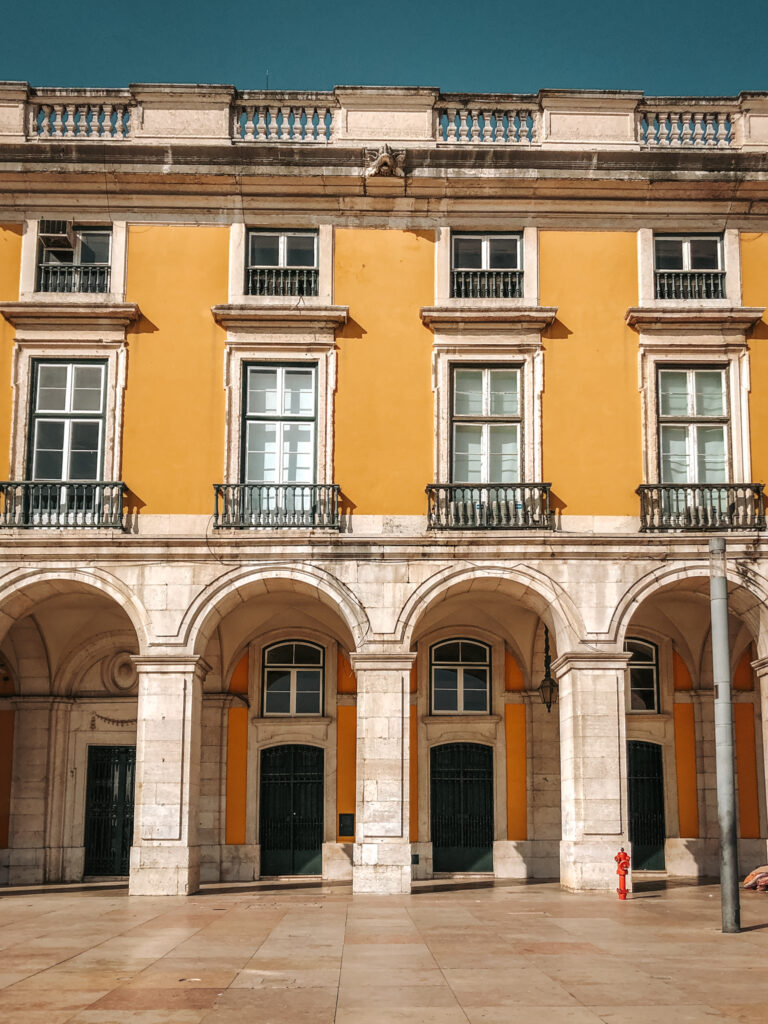
SHOULD YOU GET THE LISBON CARD?
The Lisbon Card is the official tourist card that you can buy for a certain period of time that offers you free entry to a range of sights in Lisbon (39 to be exact) – and discounts at other attractions and local businesses. You also get free public transport during the period that the card is active.
If you’re considering the Lisboa Card, there are three options tailored to your travel needs, each offering a set number of hours of use.
- For a quick city tour, the 24-hour Lisboa Card is priced at €21 for adults and €13.50 for children.
- If you plan to linger a bit longer, the 48-hour Lisboa Card might be the ticket, priced at €35 for adults and €19.50 for children.
- For an extended exploration, the 72-hour Lisboa Card offers great value, priced at €44 for adults and €23 for children.
Children eligible for these prices fall between the ages of 4 to 15.
Keep in mind that the card operates on a hourly basis, not daily. So, if you activate it at 10:00 on a Tuesday, it stays valid until 10:00 on the following Wednesday. It also needs to be picked up at specific locations in the city : including the airport, trains stations and tourist office.
Some of what is included with the card / costs of entry without the card:
- Jerónimos Monastery / €12
- Belém Tower / €8
- Pilar7 Bridge Experience / €5,50
- Lisboa Story Center / €7
- National Tile Museum / €8
- National Coach Museum / €8
- Santa Just Lift / €5,15
- Rua Augusta Arch / €3,5
- Public transport / €6,8 for a day pass
- Carmo Convent €4 / €5
- Sao Jorge Castle €12 / €15
Click here to see the list of Lisbon attractions that are free with this card.
So is the card worth it?
If you are planning to do many of the attractions included in the card than yes, absolutely! However, remember that these are some of the most popular attractions in Lisbon; they are extremely busy so be prepared for a long wait in line. This can take a big chunk of your day so it’s worth keeping in mind if you have limited time in Lisbon.
In my case, I have never seen the value in getting the card for myself as I only wanted to see one or two of the attractions included. I suggest to read my 11 amazing things to do in Lisbon article to see how I visit Lisbon without the Lisbon Card.
I guess the final answer is : it depends on what you want to do while in Lisbon and if you are willing to spend a lot of your time waiting in line to get into these attractions.
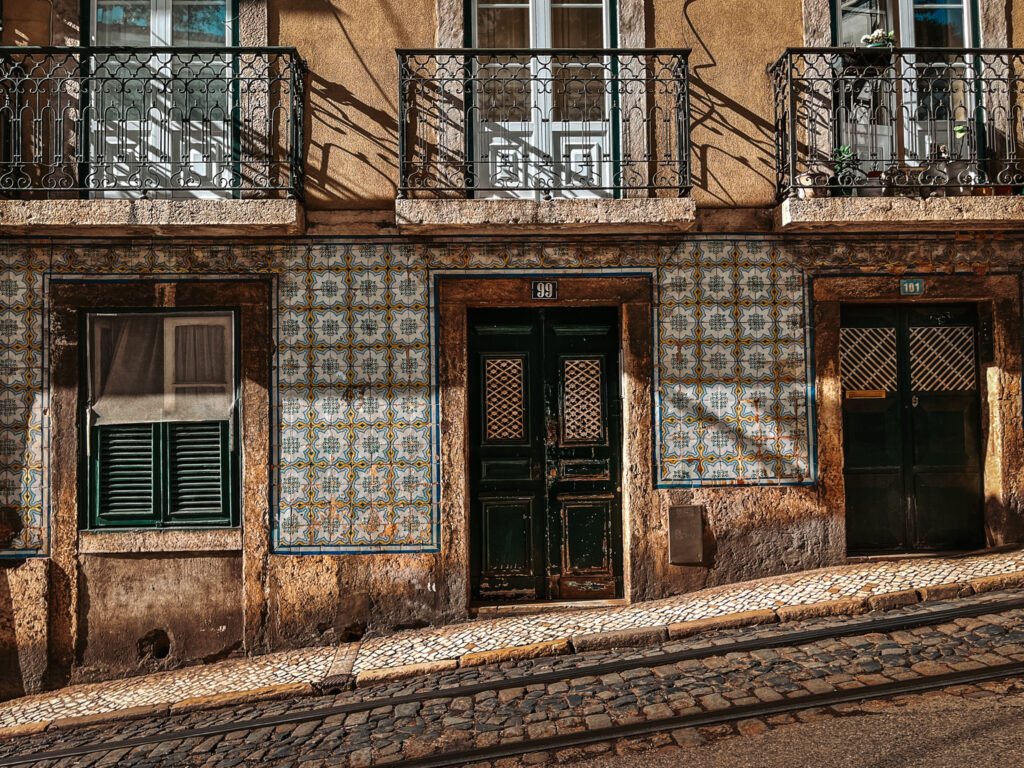
TO AVOID THE LINES, BUY YOUR TICKETS IN ADVANCE
If you don’t plan on getting the Lisbon Card, I still highly recommend buying your ticket in advance.
Places like the Jerónimos Monastery and Castelo de São Jorge can get packed, so having your tickets sorted ahead of time can save you time and hassle. Arriving early will also diminish the time you spend in line waiting to get it. Note however that at some sites, like the Jerónimos Monastery, group tour entries get priority in the morning on certain days, you will have to wait until they have been let in before you can get your turn.
The same goes for nearby Sintra, where popular spots like the Pena Palace and Quinta da Regaleira draw big crowds.
To streamline your trip planning, consider booking tickets through reputable platforms like Get Your Guide. They’re user-friendly and trustworthy, making it a breeze to secure your spot at Lisbon’s must-see attractions.


TRAM 28 IS WORTH IT, BUT ONLY IF YOU DO IT THE RIGHT WAY
Riding Tam 28, is undoubtedly one of the city’s iconic experiences, but you’ve got to do it right!
Tram 28 carries a whopping 4.5 million passengers every year. Impressive, right? But here’s the kicker – each tram has room for just 20 seated passengers and around 25 standing. Crunch the numbers, and you’ve got yourself some seriously cramped quarters.
Dating back to 1914, Tram 28 has been chugging along Lisbon’s streets since the days of horse-drawn carriages. While newer trams have joined the fleet, Tram 28 retains its vintage charm with wooden floors, timber window frames, and that signature yellow exterior.
What makes this route so darn popular? Well, for starters, it winds its way through some of Lisbon’s most beloved neighborhoods – Graça, Alfama, Baxia, Chiado, Santa Catarina, and Estrela. In just under 50 minutes, you’ll soak up the sights from Largo do Martim Moniz to Campo Ourique, traversing 7 kilometers of Lisbon’s picturesque streets.
There are multiple stops where you can hop on or off Tram 28 around the city (find all the stops on this Google Map). Tram 28 runs about every 10 mins.
So what is the right way to do it?
- First of all, start early in the morning. Tram 28 runs every day of the week typically from 6am to 10pm. By 9am the tram will be full, especially if you plan on using it in Alfama, Baxia or Chiado.
- Get on at one of the terminal – either Martim Moniz, which is closest to the main attractions in Lisbon, or Campo Ourique. I would avoid getting on anywhere else as all the seats will already be taken. It is not worth it to do this ride standing…
- But if you really want to do this like a pro, I highly recommend you start your journey at the Campo Ourique stop, which is one of the terminal for the famous Tram 28. If you start from Campo Ourique, a square in a less touristy neighborhood, you’ll be able to get a seat next to the window and enjoy the entirety of the Tram 28.
Warning // Tram 28 is renowned for being a hotspot for pickpockets. Make sure you hold on to your belonging, especially if you are doing the ride standing.
Keep Reading // 5 tips for riding Tram 28 in Lisbon
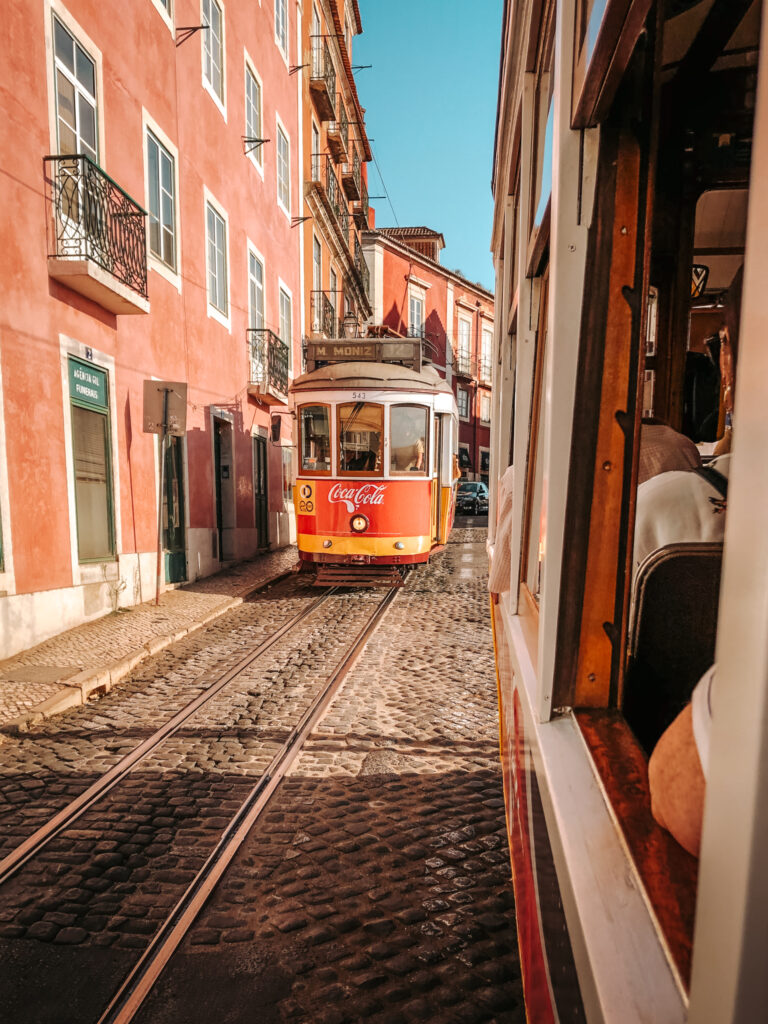
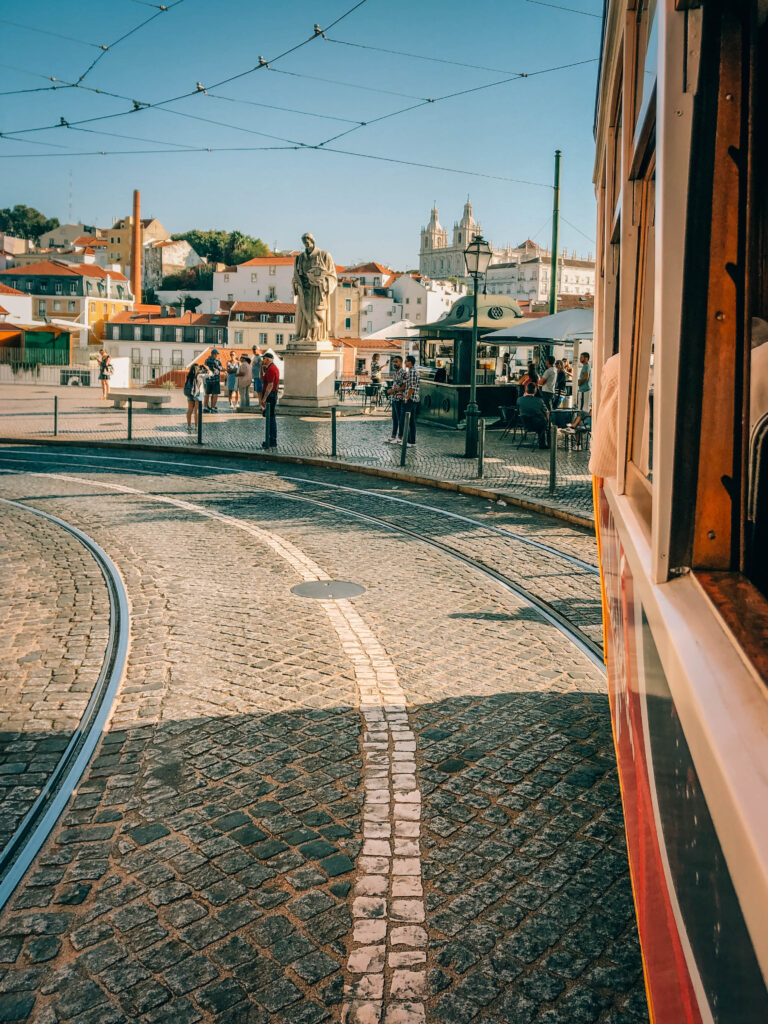
BEWARE OF PICKPOCKETS (ESPECIALLY ON TRAM 28!)
Ah, the unfortunate reality of tourist destinations – pickpocketing is an unwelcome presence, and Lisbon is no stranger to it. Crowded areas like trams and tourist hotspots are prime targets for these incidents.
To stay one step ahead, it’s all about using common sense and taking precautions to safeguard your belongings. Keep your bags securely closed, and opt to stash your phone and wallet inside rather than in your pockets. And here’s a pro tip: always keep your bag in front of you, never behind, as it’s much harder for thieves to sneakily swipe anything when you’re keeping a watchful eye. Stay vigilant, and you’ll be able to enjoy Lisbon’s charms without any unwanted surprises.
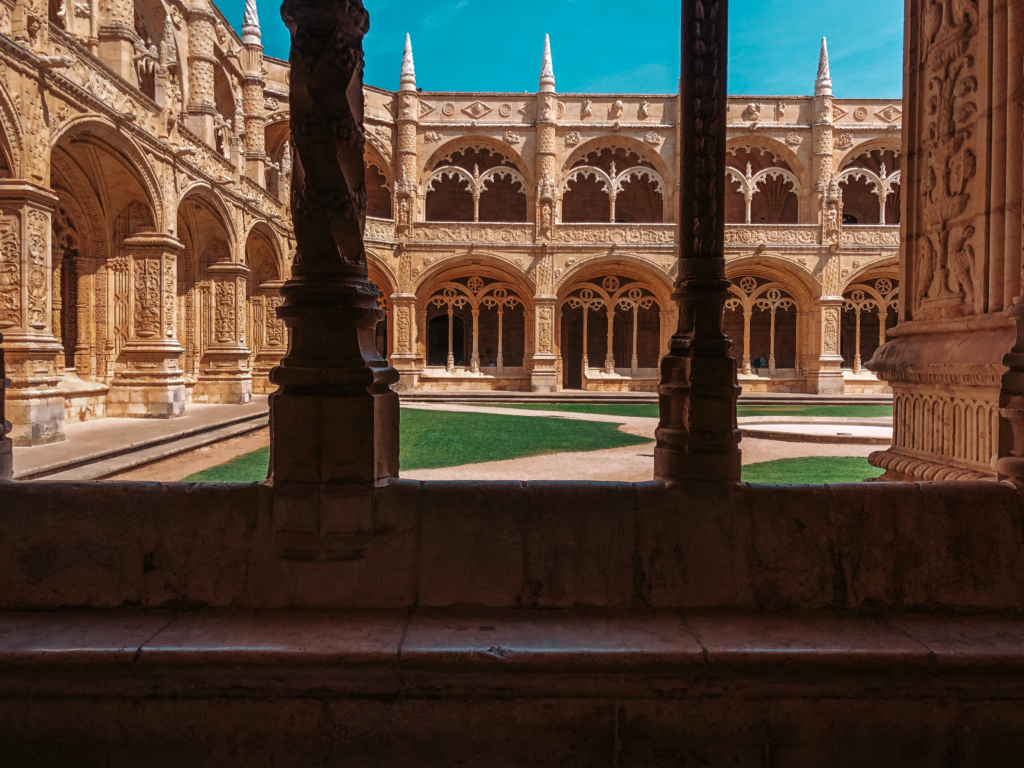
SOME THINGS ARE JUST NOT WORTH IT!
This might be an unpopular opinion, but some really popular attractions are just not worth it! These include
- Going inside the Tower of Belém: While you can visit the inside and climb the Tower, I don’t recommend it. On my first solo visit to Lisbon I waited in line a very long time to see the inside and I was quite disappointed. There is no furniture and the view is not particularly interesting. For that reason I would suggest you save some time and just admire the Tower from the outside.
- Going up the Santa Justa Lift : I know that taking the lift might be tempting because honestly walking around Lisbon can be tiering. However, the lines are always extremely long for a quick and somewhat underwhelming ride. If you are doing it for the view, here is what I suggest instead: find Largo di Carmo and to glance to your right. There, you’ll spot a narrow street winding along the side of the church. Follow that path, and before you know it, you’ll arrive at the top of the Santa Justa Lift! Here’s the kicker – you can step out onto the lift’s platform for free from this point. That’s right, no need to spend your money or endure long queues down in Baixa.
- Visiting the inside of Pena Palace: If you are pressed with time, skip the tour of the inside of the Palace. I did not find it particularly interesting and it’s usually so full of people that it’s hard to enjoy the tour.
- Eating in Baxia: Baxia is at the heart of the city and is where you will find many popular attractions. Because of that, this is a very touristy area of the city. Many of the restaurants you’ll find here will be tourist traps : meaning that you will be too much for food that isn’t very good. Instead, hike up to either Bairro Alto or Alfama where you’ll find some absolutely delicious local Portuguese restaurants.
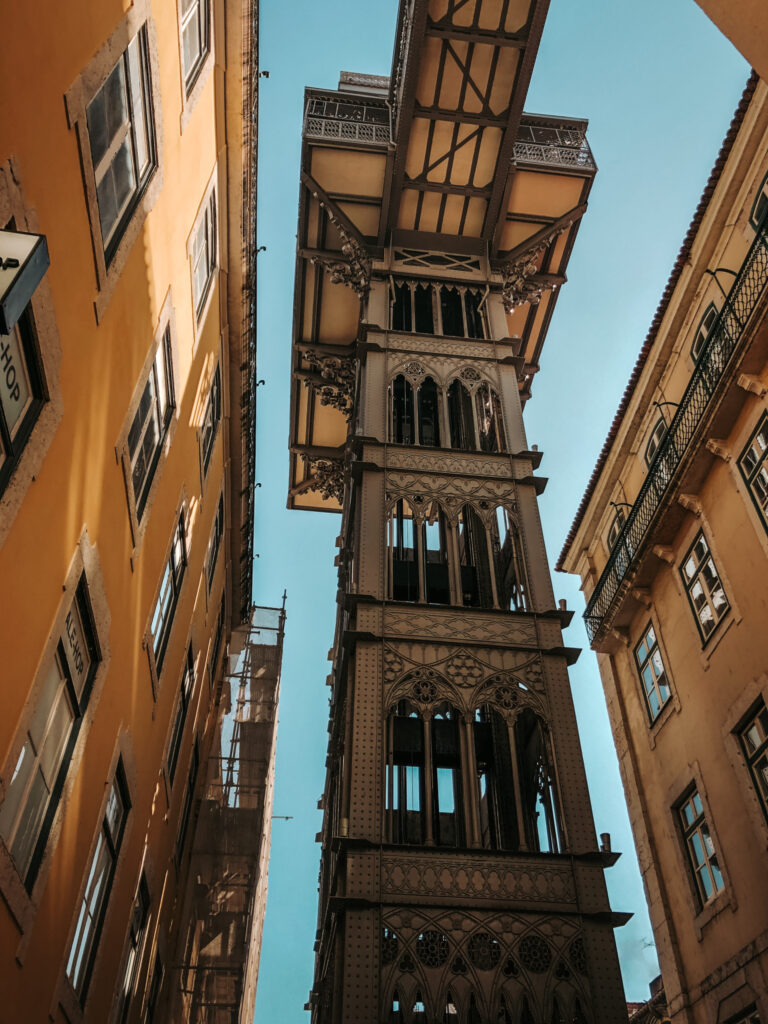
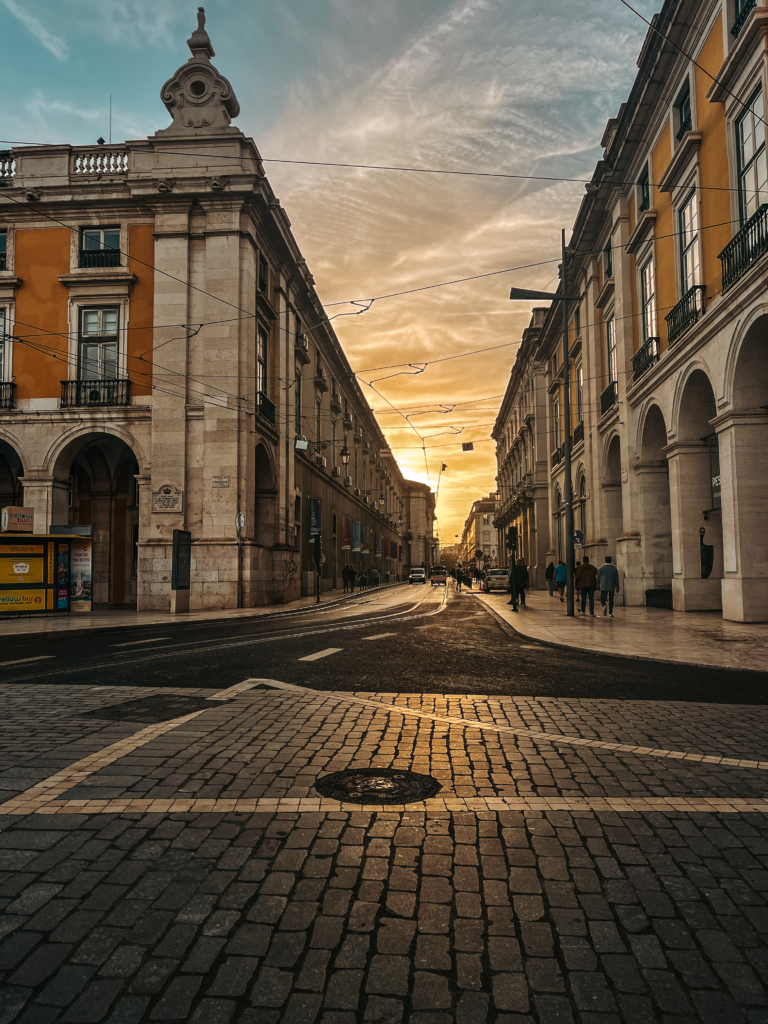
REMEMBER THAT NOTHING IS FREE, NOT EVEN BREAD
We’ve all been there – that moment when you glance at the bill after a satisfying dinner only to find a few unexpected charges. Well, brace yourself, because it happens here too. Always, always double-check the bill to ensure it matches up with what you actually ordered.
Here’s a little insider tip: in Portugal, it’s quite common for restaurants to bring out “entradas” or starters like olives, goat cheese, and bread. But here’s the kicker – they are not free. Many of us North Americans are used to free bread on the table, so don’t get caught if you don’t want to pay for it. If you don’t indulge in these “entradas“, you shouldn’t be charged for them. So, make sure to pay attention to the bill and verify that you’re only paying for what you’ve actually consumed. Trust me, it’ll save you from any awkward exchanges and disapproving glances from the waitstaff.
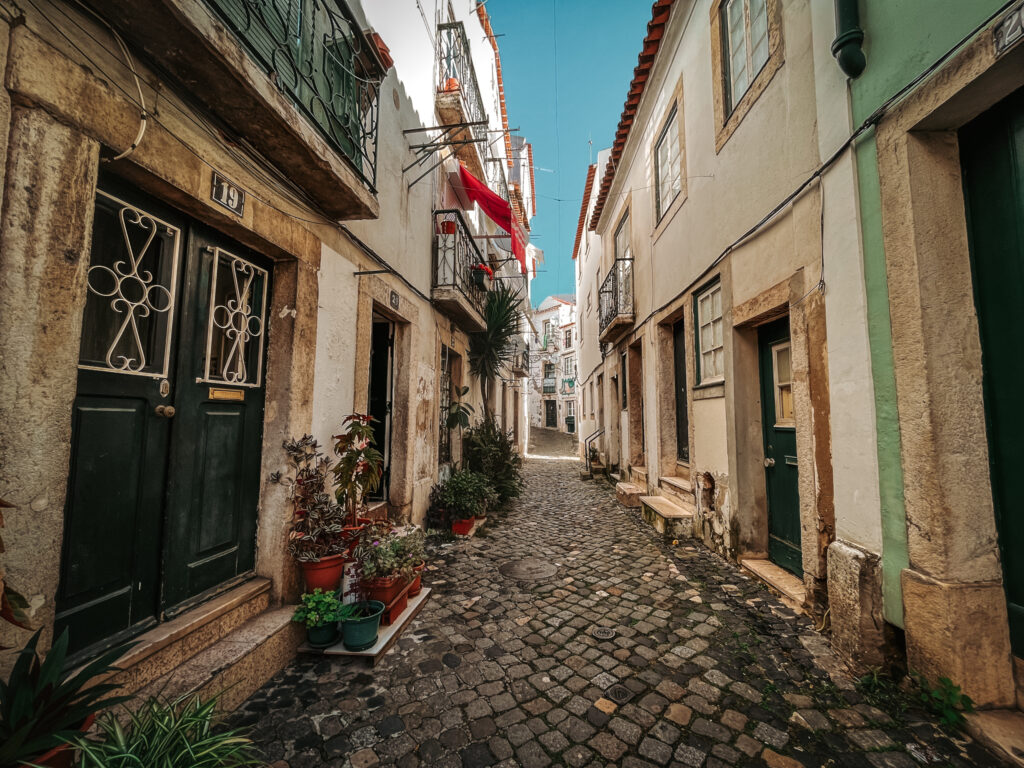
THERE ARE A LOT OF DAY TRIPS FROM LISBON, BUT PORTO ISN’T ONE
There are many AMAZING day-trips to you can do from Lisbon, however going to Porto isn’t one of them. Located only 4 hours by train from Lisbon, Porto is the perfect add-on to your Portugal itinerary. However it’s distance from Lisbon makes it impossible to visit as a day-trip. And if you think this is an obvious conclusion, you should see how many people actually attempt it every year!
If you have a few extra days in Lisbon, here are some day-trip that are absolutely worth your time:
- Sintra: This is no secret, Sintra is the most popular day-trip from Lisbon and with reason. Sintra is home to some the dreamiest castles in Europe. And you can get there in less than 1 hour by train.
- Cascais: Cascais, a seaside gem, seamlessly combines sophistication with charm. Just a breezy 40-minute train ride along the picturesque coast from Lisbon transports you to this former fishing village turned vibrant resort town.
- Cabo da Roca: About 40 kilometers west of Lisbon, you’ll find Cabo da Roca, the westernmost point of mainland Europe – often dubbed the edge of the world. Perched atop rugged cliffs overlooking the vast expanse of the Atlantic Ocean, it’s a beloved destination where visitors can bask in the awe-inspiring natural beauty that Portugal has to offer.
- Óbido: Roughly 85 kilometers north of Lisbon, is the quaint medieval town of Óbidos. Encircled by ancient city walls, it’s like stepping back in time.
- Évora: 137 kilometers from Lisbon, Évora is a historical gem. This UNESCO World Heritage site boasts a storied past spanning over two millennia, showcasing a tapestry of architectural marvels from various eras, all nestled within the confines of its impeccably preserved medieval castle walls.
Keep Reading // 1 day, 3 castles: How to make the best of your day in Sintra


WHERE TO STAY IN LISBON?
When it comes to finding the perfect place to stay in Lisbon, there’s no one-size-fits-all answer – it all boils down to your personal preferences. But fear not, I’m here to break down the pros and cons of each area to help you make the right choice.
- If you’re short on time and eager to dive straight into your Lisbon adventure, Baixa or Chiado are top contenders. These vibrant neighborhoods serve as fantastic, centrally located hubs for exploring the city. During our first trip, we bunked at the Porto do Mar Apartments in Baixa and couldn’t have been happier with our choice.
- Seeking a more romantic and enchanting vibe? Alfama beckons with its maze-like cobblestone streets and old-world charm. Just keep in mind that navigating its hilly terrain might require a bit of extra effort.
- For those craving nightlife atmosphere, look no further than Bairro Alto. Nestled atop the hill adjacent to Chiado, this neighborhood boasts a lively nightlife scene that’s sure to keep you entertained well into the wee hours.
For my visits, I’ve stayed a bit outside of these neighborhoods but still close enough to be at a tram-ride away from everything. I highly recommend both of these hotels (better suited for couples or solo travelers):
- Garam Lisboa : Located half-way between the city center and Belém, this was an an adorable boutique-hotel with a pool and swings as breakfast table chairs. Breakfast was included in the price of the room.
- Upon Angels : This is a brand new adult-only hotel a short walk (uphill!) away from the Aflama district. The rooms are big and colorful. The hotel also has a pool and a bar.
Keep Reading // For specific recommendations check out my blog post on Where to Stay in Lisbon?

READ THESE POSTS BEFORE VISITING LISBON!
LISBON GUIDES | 11 Amazing Things to do In Lisbon; How to make the best of your visit to Belém; 1 day, 3 castles: How to make the best of your day in Sintra; 5 tips for riding Tram 28 in Lisbon; Where to Stay in Lisbon?
LISBON PHOTOS | 30 amazing photos of Lisbon
THE REST OF PORTUGAL | 11 amazing things to do in Porto; 9 amazing things to do in Lagos
PIN FOR LATER
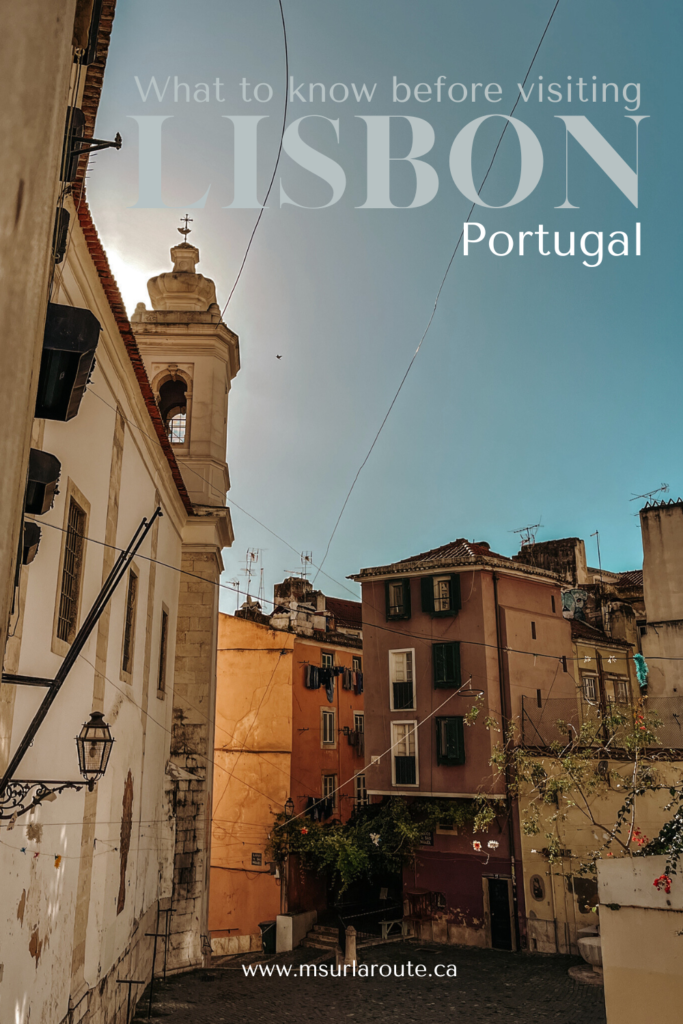


Follow me on Instagram!
Want to touch the southernmost point of mainland Canada? 👇🇨🇦
Then Point Pelee National Park needs to be on your summer list.
From epic sunsets and peaceful marsh boardwalks to migrating birds and butterflies, this park packs a lot into a small space.
In this quick guide:
📍 What to do
🗓️ Best time to visit
⛺ How to camp (hint: it involves oTENTiks)
🦋 And a few cool facts to impress your road trip buddy
Save this for later & tag someone who’d love to stand at the tip of Canada with you 🌊
🇫🇷 La version française de ce texte se trouve dans les commentaires.
#PointPeleeNationalPark #ExploreCanada #TravelOntario #ParksCanada #BucketListTrip #OntarioRoadTrip #NatureEscape #BirdingSeason #WanderOntario

Did you know Peterborough & the Trent-Severn Waterway made the New York Times list of 52 Places to Visit in 2025?
After a weekend exploring the area… I get it. Here’s what makes it one of Ontario’s best summer road trips ⬇️
🌿 Walk with alpacas at a local farm
🚤 Cruise through the world’s highest hydraulic lift lock
🍷 Sip sangria + eat wood-fired pizza at a vineyard
🛶 Visit the brand-new Canadian Canoe Museum
🌄 Hike through caves & forests at Warsaw Caves Conservation Area
🥧 Taste-test butter tarts in Hastings, Campbellford & Lakeside
The perfect Ontario getaway: nature, small towns, good food, and local gems everywhere you turn.
📍 Save this for your next summer road trip!
And tell me below — which stop are you adding to your bucket list?
🇫🇷 Saviez-vous que Peterborough et la voie navigable Trent-Severn figurent sur la liste des 52 destinations à visiter en 2025 selon le New York Times ?
Après un week-end à explorer la région… je comprends tellement pourquoi. Voici pourquoi c’est un road trip incontournable en Ontario cet été ⬇️
🌿 Marcher avec des alpagas dans une ferme locale
🚤 Naviguer sur la plus haute écluse hydraulique au monde
🍷 Boire de la sangria et déguster une pizza au feu de bois dans un vignoble
🛶 Visiter le Musée canadien du canot
🌄 Explorer les sentiers et les grottes du parc Warsaw Caves
🥧 Et bien sûr, faire le plein de tartes au beurre dans les charmants villages de Hastings, Campbellford et Lakeside
Le combo parfait : nature, petites villes, bouffe locale et histoire à chaque détour.
📍 Sauve ce guide pour ton prochain road trip d’été en Ontario !
Et dis-moi en commentaire : quelle activité te tente le plus ?
#discoveron
@ontariotravel and @kawarthas_northumberland
#PeterboroughOntario #TrentSevernWaterway #OntarioRoadTrip #ExploreOntario #SummerInOntario #HiddenGemsOntario #CanadianTravel

These Ontario spots understood the assignment… Saunas in the forest, hot tubs with a view, outdoor soaks under the stars, we’ve got it all!
Here are 6 places where the spa setup is reason enough to book the trip:
1. Aux Box (Huntsville)
2. The Baltic by Fort Tree House Co. (Minden)
3. Back Forty Glamping (Meaford)
4. Anupaya (Deep River)
5. Tiny Stays (Prince Edward County)
6. The June Motel (Beaver Valley)
Tag someone who owes you a spa weekend 💆♀️
🇫🇷 La version française de ce texte se trouve dans les commentaires
#OntarioStays #GlampingOntario #WeekendGetaway #SaunaVibes #HotTubGoals #OntarioSpas #TinyCabins #TravelOntario

I’m on a mission to put Belleville on the map for your Ontario summer adventures 🌞
This is way more than just a drive-by on the 401. Think: charming town vibes, scenic hikes, amazing food (I’m still dreaming about those perogies), and… turtles. 🐢
✨Here’s what I did (don’t forget to save the reel for the full breakdown!):
📍Explored downtown + coffee at Benji’s
🐢 Turtle Pond sanctuary
🥟 Lunch at Kafana (get the perogies!)
🌲 Hiked up Sager Tower (located in Quinte West just a short drive away)
🌮 Dinner at Pop-Ups on the Bay
🍓 Smoothies, wildlife, breweries & more on Day 2
🏖 Bonus: Presqu’ile for a beach day just 35 minutes away.
For this visit, I stayed at the Holiday Inn Express Belleville, perfectly located for all your Bay of Quinte adventures. 👌
Save this for your next summer roadtrip & tag someone who needs a mini escape!
🇫🇷 La version française de ce texte se trouve dans les commentaires
*made in partnership with Bay of Quinte Tourism*
#VisitBelleville #BayofQuinte #OntarioGetaways #HiddenGemsOntario #ExploreOntario #WeekendTripIdeas #MsurlarouteAdventures

Everyone visits Banff, but just an hour away, there’s also this. 👀
Grassi Lake in Kananaskis might just be one of the most underrated hikes in Alberta.
It’s short, it’s scenic, and the turquoise water? Totally unreal.
💦 Take the interpretive trail for waterfalls and forest views
⛰️ End at a lake so vibrant it looks photoshopped
So if you’re heading to the Rockies this summer, don’t sleep on Kananaskis.
Some of the best views are just off the radar.
💬 Been to Kananaskis or still on your list?
💾 Save this if you’re planning an Alberta trip!
🇫🇷 La version française est dans les commentaires! ⬇️
#GrassiLake #KananaskisCountry #AlbertaRoadTrip #HiddenGemsAlberta #ExploreKananaskis #HikingAlberta #BanffVsKananaskis #CanadianRockies #SummerInAlberta

